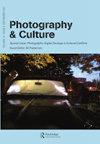Punjabi Migration to the Black Country: A Photographic Journey through History, Cultures and Digital Technology
IF 0.3
4区 艺术学
0 ART
引用次数: 0
Abstract
Indian migrant workers have been present in the United Kingdom’s county of the West Midlands since the 1930s. Initially, they were mostly men. However, by the 1960s, many of them had married Indian women, which meant that, over time, more families migrated to the region. They found work in the manufacturing, textile and service sectors across an area known as the Black Country, consisting of the Metropolitan Boroughs of Dudley, Sandwell, Walsall and Wolverhampton. While they worked hard to make a living, not everyone was pleased with their arrival. The Indian migrants gradually became subject to racial abuse and discrimination, largely fueled by the two infamous politicians, Enoch Powell, who was MP for the city of Wolverhampton at the time, and Pete Griffiths, who was the MP of Smethwick. Despite this opposition, many local people of the Black Country welcomed the migrants and, soon enough, Desi Pubs, Indian shops, local music and the vibrant local multiculturalism altogether has turned into a source of pride for the people living across the region. As of 2021, 15% (approximately 40,000 people) of the residents of the city of Wolverhampton – the Black Country’s beating heart – are part of the Punjabi community, making it the largest Punjabi community in the United Kingdom outside of London. In 2016, members of Black Country Visual Arts, a local communityled cultural organization of which I am the director, established a digitallybased photography archive with a view to increasing the visibility of UKbased Punjabi migrants in British society. We named it the Apna Heritage Archive because, in the Punjabi language, “Apna”means “ours”. Indeed, we designed the Apna Heritage Archive to preserve private photographs that, nevertheless, can reflect and respond to the broader history of the Punjabi community in the city of Wolverhampton. In order to create it, we set up events and workshops in a range of places in which especially旁遮普移民到黑人国家:穿越历史、文化和数字技术的摄影之旅
自20世纪30年代以来,英国西米德兰兹郡就一直有印度移民工人。起初,他们大多是男性。然而,到了20世纪60年代,他们中的许多人嫁给了印度妇女,这意味着随着时间的推移,越来越多的家庭迁移到该地区。他们在一个被称为“黑人国家”的地区的制造业、纺织业和服务业找到了工作,该地区由达德利、桑德韦尔、沃尔索尔和伍尔弗汉普顿的大都会区组成。虽然他们努力谋生,但并不是每个人都对他们的到来感到满意。印度移民逐渐受到种族虐待和歧视,这主要是由两位臭名昭著的政客推动的,他们是当时伍尔弗汉普顿市的议员伊诺克·鲍威尔和斯迈思威克市的议员皮特·格里菲思。尽管有这种反对意见,黑人国家的许多当地人还是欢迎移民,很快,德西酒吧、印度商店、当地音乐和充满活力的当地多元文化就成为了生活在该地区的人们的骄傲。截至2021年,黑人国家跳动的心脏伍尔弗汉普顿市15%(约40000人)的居民是旁遮普社区的一部分,使其成为伦敦以外英国最大的旁遮普社区。2016年,黑人国家视觉艺术组织(Black Country Visual Arts)的成员建立了一个基于数字的摄影档案,以提高英国旁遮普移民在英国社会中的知名度。我们将其命名为阿普纳遗产档案馆,因为在旁遮普语中,“阿普纳”的意思是“我们的”。事实上,我们设计阿普纳遗产档案馆是为了保存私人照片,尽管如此,这些照片可以反映和回应伍尔弗汉普顿市旁遮普社区的更广泛历史。为了创建它,我们在一系列地方举办了活动和研讨会,特别是
本文章由计算机程序翻译,如有差异,请以英文原文为准。
求助全文
约1分钟内获得全文
求助全文

 求助内容:
求助内容: 应助结果提醒方式:
应助结果提醒方式:


